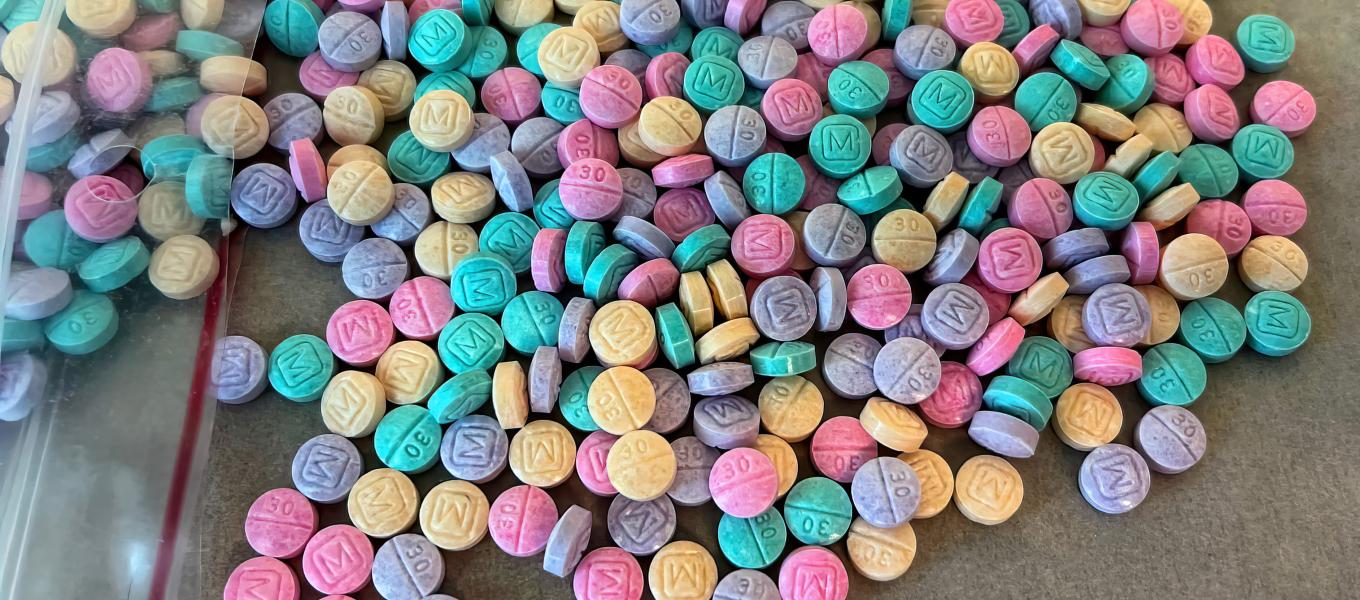
In late August, the U.S. Drug Enforcement Administration (DEA) issued a warning to the public to look out for an “alarming emerging trend”: colorful pill and powder versions of the potent opioid fentanyl, known as “rainbow fentanyl.” “This trend appears to be a new method used by drug cartels to sell highly addictive and potentially deadly fentanyl made to look like candy to children and young people,” the agency said.
While fentanyl does threaten young people’s lives—especially if they’re not aware they’re taking it—some drug experts caution that focusing just on the rainbow version may obscure other equally dangerous types of the drug. Here’s what to know about rainbow fentanyl, and how to protect yourself and your children.
The focus on rainbow fentanyl may be misleading
Illicitly manufactured fentanyl is very dangerous in any color, and some drug experts worry that there’s too much focus on the risks posed by rainbow fentanyl. “Kids are getting pills, and some of them are dying from them. This is absolutely a distraction,” says Dean Shold, co-founder of the non-profit FentCheck, which provides fentanyl test strips and drug education.
More from TIME
Another issue is that the DEA hasn’t revealed evidence that the colors are intended specifically to attract children. Fentanyl has come in colors for years, and some research has found that color is one of the ways drug users identify illicit drugs’ potency. “It’s actually keeping them safe, because they know what they’re getting for each color,” says Jon E. Zibbell, a senior public health analyst at RTI International, a nonprofit research institute promoting science-based solutions for public-health issues.
If a substance is marketed as a prescription pill like oxycodone or Xanax, however, teens and other young people who use drugs may not realize they contain fentanyl, says Dr. Scott E. Hadland, a pediatrician and addiction specialist at Massachusetts General Hospital and Harvard Medical School. The illicit drug supply in the U.S. is very dangerous, in part because substances sold as one drug may contain a mixture of others, including dangerous substances like the animal tranquilizer xylazine and benzodiazepines. This randomness raises the odds of overdose because of the combined effects of drugs, as well as the possibility that a person could consume too strong of an opioid dose.
Hadland worries that multi-colored fentanyl could make it more “interesting or exciting” to young people. But, he says, “fentanyl is already everywhere in the market. I don’t know that this is going to be some new thing that brings in teens to use who had not previously been using.”
Kids are already at risk from fentanyl
Over the last few years, the number of annual overdose deaths among 14- to 18-year-olds in the U.S. has increased, rising from roughly 490 in 2019 to about 950 in 2020, according to an analysis published in JAMA in April. A growing share of teen overdose deaths involve fentanyl; the drug was involved in more than two-thirds of overdose deaths in 2021.
It’s also more common for manufacturers to press fentanyl to look like prescription drugs, says Joseph Palamar, an associate professor at New York University Langone who studies drug-use epidemiology. For instance, many colored fentanyl pills are blue and pressed with the logo M30 to resemble the drug oxycodone. In a study published in Drug and Alcohol Dependence in May, Palamar and colleagues found that the portion of fentanyl seized in pill form rose from 13.8% in 2018 to 29.2% in 2021. “I’d warn [my children] that illegally obtained pills can contain fentanyl, and that exposure to even a small amount can be enough to kill someone,” he says.
How to keep your kids safe
It’s essential to store all drugs where young children can’t reach them, says Palamar. “I’m not sure if manufacturers or dealers intend for these new pills to attract kids, but what worries me is that they can attract kids,” says Palamar. “What worries me is if a kid’s parent, sibling, or friend leaves one of these fentanyl pills around and then someone—a kid or an adult—eats it thinking it’s candy.”
Keeping an open dialogue with teens about the dangers of illicit drugs can help protect them, says Hadland. Teens should know that illegally obtained pills may contain fentanyl, and that even a small amount of fentanyl can be fatal, he says.
Parents should also consider keeping the opioid overdose reversal drug Narcan on hand, which can save someone’s life. “I think of it like a fire extinguisher,” says Hadland. “It’s the thing you always want to have in your home but never want to actually need to use.”
Some teenagers use illicit drugs to cope with addiction or a mental-health disorder, and parents should watch for red flags, says Hadland. For instance, teens often use alcohol, marijuana, or nicotine before turning to riskier drugs; it’s especially concerning, he says, if a teen uses substances frequently. Other warning signs can include struggling in school and changes or deteriorations in their relationships. However, prevention is best, and making sure that children receive support for any mental-health problems is one of the best ways to safeguard against drug use.
“I think conversations often are quite alarmist: ‘Look at this new drug! Imagine if this were to make it into your community!’” says Hadland. “We also need to remember that many of the young people who use these substances are struggling with mental-health problems or addiction that are going completely unaddressed. And we need to make sure we’re providing resources for that.”
More Must-Reads from TIME
- Cybersecurity Experts Are Sounding the Alarm on DOGE
- Meet the 2025 Women of the Year
- The Harsh Truth About Disability Inclusion
- Why Do More Young Adults Have Cancer?
- Colman Domingo Leads With Radical Love
- How to Get Better at Doing Things Alone
- Michelle Zauner Stares Down the Darkness
Contact us at letters@time.com